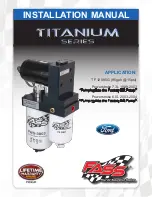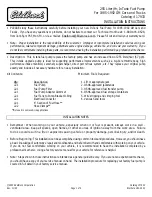
nutes, then start the engine in the vehicle
with the discharged battery.
CAUTION
l
Keep the engine of the vehicle giving assis-
tance running.
7. After the engine is started, disconnect the ca-
bles in the reverse order.
WARNING
l
Charging the battery while it is installed
in the vehicle might cause the battery to
catch fire and explode. Or damage to the
vehicle could result. If it has to be charg-
ed in that condition for unavoidable rea-
sons, disconnect the vehicle side negative
(-) terminal connected to the battery.
l
Keep sparks, cigarettes and flames away
from the battery because the battery may
produce an explosion.
l
Use adequate ventilation when charging
or using the battery in an enclosed space.
l
Remove all the caps before charging the
battery.
l
Electrolyte is corrosive diluted sulphuric
acid.
If electrolyte (battery acid) comes into con-
tact with your hands, eyes, clothes and
the painted surface of your vehicle, it
should be thoroughly flushed with water.
If electrolyte gets in your eyes, flush them
with water immediately and thoroughly,
and get prompt medical attention.
CAUTION
l
Do not attempt to start the engine by pull-
ing or pushing the vehicle.
It could damage your vehicle.
l
Always wear protective eye goggles when
working near the battery.
l
Keep the battery out of the reach of chil-
dren.
NOTE
l
If the vehicle is put in motion without fully
charging the battery, it might cause the loss
of smooth engine operation and the anti-lock
brake warning lamp to illuminate. Refer to
“Anti-lock brake system (ABS)” on page
4-21.
Engine overheating
E00800602126
If the water temperature gauge indication remains
in the overheating zone for a long time, the engine
may be overheating. If this occurs, take the follow-
ing corrective measures:
1. Stop the vehicle in a safe place.
2. Check whether steam is coming from the en-
gine compartment.
[If steam does not come from the engine com-
partment]
With the engine still running, raise the bon-
net to ventilate the engine compartment.
[If steam is coming from the engine compart-
ment]
Stop the engine, and when the steam stops,
raise the bonnet to ventilate the engine com-
partment. Restart the engine.
WARNING
l
Do not open the bonnet while steam is com-
ing from the engine compartment. It
could cause steam or hot water to spurt
out, causing burns. Hot water could spurt
out even when there is no steam coming
out, and some parts will be very hot. Be
very careful when opening the bonnet.
l
Be careful of hot steam, which could be
blowing off the reserve tank cap.
l
Do not attempt to remove the radiator
cap (petrol-powered vehicles) or reserve
tank cap (diesel-powered vehicles) while
the engine is hot.
For emergencies
6-04
6
Summary of Contents for GRANDIS OXPE10E1
Page 1: ...GRANDIS OWNER S MANUAL GRANDIS ENGLISH OXPE10E1 ...
Page 35: ......
Page 139: ......
Page 185: ......
Page 244: ...Diesel powered vehicles Front of the vehicle Specifications 9 03 9 ...
Page 264: ...5 ...
Page 265: ...6 ...
Page 266: ...7 ...
Page 267: ...8 ...
Page 268: ...9 ...
Page 269: ...10 ...
Page 270: ...11 ...
Page 271: ......
Page 272: ......
Page 273: ......
















































